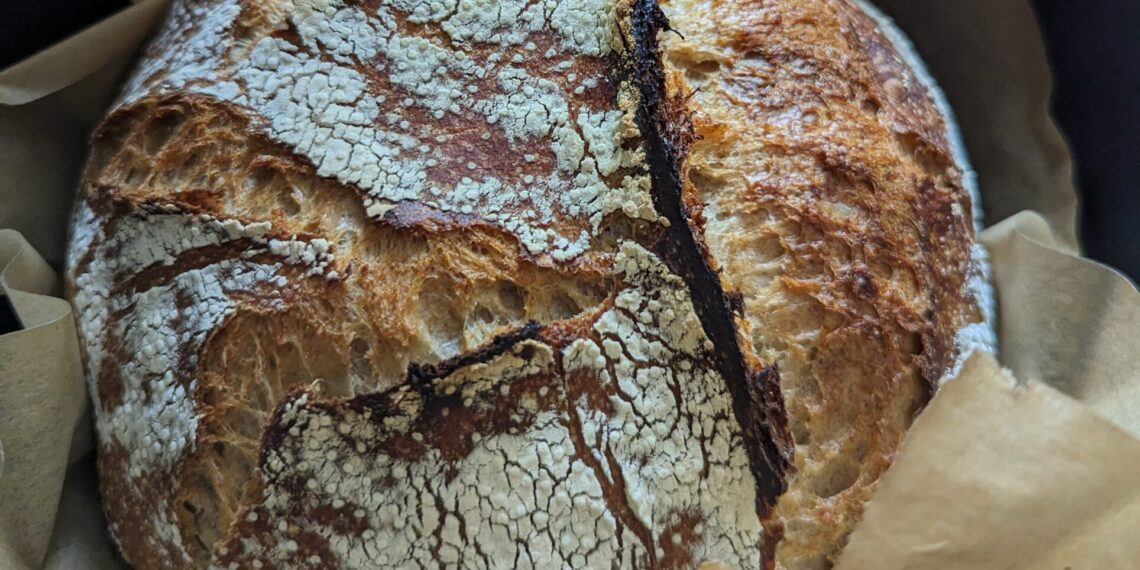
9 Things I No Longer Buy (Because I Make Them)
I stumbled across a reel last week on Instagram that said that chickens are the gateway drug to conspiracy theories. I’ve gone ahead and linked this gem for you, but I’ll also go ahead and explain it because although I haven’t got chickens yet (although I would if I could), I can relate so deeply to this.
The reel basically talks about how once you get chickens (and I think chickens could be swapped for any first step you take to break away from mainstream food systems, for us that was composting and gardening) you’re view of the entire mainstream way of doing things will start to fall apart. Mass-produced food (and other products) don’t look as good, taste as good, or are even as nutritious as homegrown/naturally raised/homemade products. From there you’ll start to notice weird ingredients in mass-produced food (have you read a Walmart Great Value food label lately…and that’s not even the worst) and then you’ll start to question other products and things you’ve just used your entire life.
I could go on and on about this, but that’s not what I’m here to talk about today. Today I want to talk about some of the things I have started making on my own that I used to buy from the store that tastes better and/or works better than the store-bought counterpart I had used my entire life.
I actually thought about writing this post a long time ago, the timing of that reel just gave me something “fun” and semi-relatable to talk about before I dove into my list.
Food
Sourdough Bread
I have not yet mastered the art of sourdough, but I’m doing well enough that I haven’t bought a loaf of sourdough since March when I first started my starter.

Sourdough was everywhere during the pandemic and although I was a bit late to the trend I am so happy I finally took that leap.
I was hesitant at first to step into the world of sourdough. It seemed like the internet was full of sourdough horror stories – hard bread and failed starters. I struggle to make a frozen loaf of white bread I thought sourdough was out of reach. But surprisingly I haven’t had any major hiccups. My starter never died and every loaf I’ve made, although not perfect was edible.
I’m still taking steps to make my starter stronger and I’m still testing different recipes and techniques. I’ve started to blend different approaches I’ve seen, figuring out what works best for me. No loaf has been exactly what I want, some have a burnt bottom, some don’t rise enough, some rise too much, and some are way too chewy, but I’m confident I’ll eventually get there.
If you want to try out making your own sourdough here are some links to recipes, videos, and social media accounts I’ve found helpful.
- Beginner Sourdough Starter Recipe
- 7 Easy Steps to Making an Incredible Sourdough Starter From Scratch
- Sourdough Starter
- Sourdough Bread: A Beginner’s Guide
- Artisan Sourdough Bread With All Purpose Flour
- Mary Grace Quigley
- 15 Mistakes Most Beginner Sourdough Bakers Make
Broth and Stock
Making homemade broth/stock (I am aware they are different but in my house and the way I use them I treat them interchangeably and don’t get too hung up on the differences…yet) was something I intended to start doing, but it has been one of the best decisions I have made this year (technically last year).
My adventure into homemade broth/stock was triggered by two things, my desire to reduce waste and exploring whole roasted chickens.
The first broth/stock I made was a chicken broth/stock last Christmas. For a family holiday party, my husband and I decided to roast a whole chicken, and then we did it again, and again. By the time we decided to do the second chicken, I realized what a waste it was to throw out the carcass at the end of it all and remembered that my mom used to make chicken noodle soup. Now I’m not a huge soup person and at the time didn’t really feel like soup, but started thinking about how I was buying chicken broth/stock probably once or twice a month. So I decided from now on, whenever we made a chicken I would boil the carcass, throw in some veggies (onions, carrots, celery…whatever I have available), some spices, and boil it down. I then jar it and freeze it.
The vegetable broth was a result of us cutting back on our compost (that’s a story for another time). Rather than composting all our vegetable scraps I started storing them (mostly onion peels, garlic peels, the tops of carrots, and ends of celery) in the freezer until I had an entire freezer bag full. Once that happened, just like the chicken broth/stock, I’d add in some spices and reduce it.
My freezer is now constantly stocked with chicken/turkey/vegetable broth/stock and I have not had to buy any since last year.
Butter
Disclaimer on this one, I do still buy butter, but that is out of convenience. If I didn’t bake so much I would totally commit to only making my butter. That being said, I do occasionally make my own butter when I have some leftover cream. It’s delicious on homemade sourdough!
I was inspired to make my own butter by seeing it repeatedly on Instagram. It seemed so easy and fun and one day I just decided to try it.
Homemade butter is super easy! You just add cream to a jar (or a mixing bowl) and shake (or beat) until the butter solids start to separate. Once the butter has fully separated from the buttermilk, you can strain the solids out (save the liquid, you now have buttermilk), squeeze any access moisture out with a cheesecloth, and then form the butter in ice water, continuing to remove any remaining buttermilk. I also like to add a little salt for flavoring.
Pickled Jalapenos
Pickled jalapenos aren’t something we were buying regularly, but they are now something we always have on hand and everyone seems to agree, homemade is so much better than store-bought.
We started pickling jalapenos out of necessity. Year-round, our most productive plant in the garden is our jalapeno plant and we just can’t keep up with it! The only option we had was to start pickling (and sometimes candying).
You can click here if you want to check out the pickling recipe I use most often.
Pickles
I love pickles, but I’m very picky about pickles. They have to be small and crisp. No one else in my household liked pickles at all until I made them at home.
I wanted to make homemade pickles because I love pickles but am so picky about them. Because I want them small, and crisp, it seemed like the perfect reason to make my own. I could pick my cucumbers at the size I wanted and eat them before they started to get too soft. I didn’t plan on converting my whole household, but I did.
The first batch I ever made was a huge hit with both my husband and my sister-in-law. They now both wait and ask for them every summer.
Here is the recipe I work from, but tweaking the spices here and there.
Ranch
I love ranch. My husband loves ranch. And we both are pretty picky (I am worse than him). He is happy with Ken’s or Hidden Valley. I hate them both and instead have to stock up on homemade ranch anytime we visit a local greasy spoon.
And then one day I saw a YouTube video where a creator asked ChatGPT to create recipes for them and it got me thinking. Mostly I prefer ranch from a few select burger places around where I live, but there are a few big chain restaurants that I think have good ranch (Chili’s and Wingstop). I’d tried searching the internet for copycat recipes but never found one that was just right. So I asked ChatGPT to give my copycat recipes.
It populated a recipe for Chili’s ranch and Wingstop. I tried both and although neither was exactly right they were both good and set me on a path to tweak it to my own ranch dreams. I still haven’t found perfection, but I’m working on it.
Tomato Sauce
This, like my broth/stock, was not a path I planned to explore, but this summer I had way too many tomatoes that were going bad quickly.
I got desperate and decided to cook them down, blending together things I saw consistently in different recipes, adding very few spices since I wasn’t sure how I would be using them in the future, and then jarred and froze them.
I wasn’t planning on this being our go-to for tomato sauce, we do use it a lot in things like Spanish rice and spaghetti, but I assumed we’d use what we froze and then go back to the store-bought stuff.
We just recently ran out of homemade and used our first can again. Both my husband and I hated it and have decided we need to stock up on tomatoes and make more homemade ASAP.
Household Products
I have very sensitive skin and I am paranoid about chemicals and carcinogens, and I purposely avoid going down that rabbit hole as much as possible because there is bad stuff in everything and I don’t know if I’m ready for that. However, when I stumble across natural DIY options that seem efficient and doable, I’m down to try them out. So far I have found a homemade all-purpose cleaner that gets the job done (mostly) and a laundry detergent that is cheap and effective.
All-Purpose Cleaner
I found a DIY cleaner on Instagram and was hesitant about how well it would work (for my family). The recipe is simple – fill a jar with orange peel (I now use any citrus) and fill the jar with vinegar. Let the peels soak for one week and then drain and move to a spray bottle.
I know vinegar is good for cleaning, so it wasn’t the efficiency I was worried about, I was worried about the smell. My husband hates the smell of vinegar, I don’t mind it. Luckily the citrus helps cut the vinegar smell and he is pretty happy with it.
I now only use chemicals in the bathroom and on large messes.
Laundry Detergent
Our skin is our biggest organ and laundry detergent is nasty! I’ve been wanting to switch to more natural laundry detergent for a long time now but was worried about the cost, effectiveness, and potential damage it would cause to my (my landlord’s) washing machine.
For the past year now I have been on the lookout for cleaner more natural options or safer homemade options. Finally, after hours and hours of research, I came across a recipe that seemed safe to use, safe for our washer, and cost-effective.
- 1 bar of fels-naptha grated finely
- 2 cups of washing soda
- 2 cups borax
I mix this together and then use this mixture as my laundry detergent. The key to not damaging your clothes or machine (or so I’ve read) is to be very careful about how much you use. It only takes 1-3 tablespoons per load.
I use 1 tablespoon for a small load, 1.5 tablespoons for a medium load, 2 tablespoons for a large load, and an extra tablespoon if the load is very dirty (jeans or workout clothes mainly).
I’ve been using this for a month now and so far so good!





One Comment
Amy Gong
Love this list! I love making chicken stock too from the rotisserie chickens I buy at the store. Need to try making pickles again!